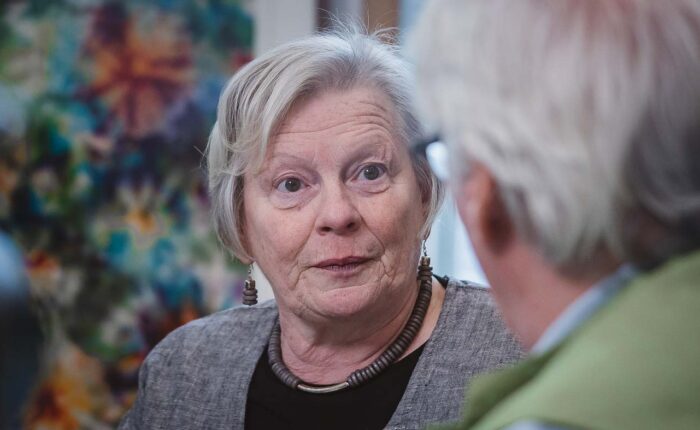Smelling Parkinson’s Early Clues

How One Woman’s Nose Changed Parkinson’s Research
Imagine being able to smell Parkinson’s disease before clinical symptoms emerge. It might sound like science fiction, but for Joy Milne, a retired nurse from Perth, Scotland, it became a powerful reality. Her extraordinary sense of smell not only astonished doctors but sparked a new scientific frontier in Parkinson’s research.
Joy’s story begins with love — and an unusual scent. Years before her husband Les was diagnosed with Parkinson’s disease at age 45, Joy noticed something different about him. He had developed a distinct, musky odor. It wasn’t body odor or cologne. It was unfamiliar, persistent, and unexplainable. At the time, she brushed it off as a personal quirk. But it would soon reveal something much more profound.
A Nose That Knew
After Les’s Parkinson’s diagnosis, Joy’s observations took on new meaning. Attending a Parkinson’s support group, she again noticed the same musky scent on others with the condition. Eventually, she voiced her suspicion: Parkinson’s disease might be detectable by smell.
This idea found its way to Dr. Tilo Kunath at the University of Edinburgh and Professor Perdita Barran at the University of Manchester. Together, they designed an experiment to test Joy’s ability.
She was asked to sniff T-shirts worn overnight by both individuals with Parkinson’s and healthy control participants. The results were astounding: Joy correctly identified all the Parkinson’s shirts. In one instance, she even flagged a person from the control group as having the scent—though doctors initially thought she was wrong, that individual was later diagnosed with Parkinson’s. Her nose had been right all along.
Unlocking Diagnostic Potential
The scientific community took notice. Researchers began investigating what caused the odor Joy detected. They discovered that Parkinson’s changes the composition of sebum, an oily substance produced by the skin. These changes create unique volatile organic compounds (VOCs).
By analyzing the VOCs in sebum using mass spectrometry, researchers found a pattern: specific compounds were more prevalent in individuals with Parkinson’s. This discovery opened the door to creating a non-invasive diagnostic test — a skin-swab that could detect Parkinson’s long before tremors or rigidity set in.
Early diagnosis could dramatically improve patient outcomes, allowing earlier treatment and better planning for the future.
Smelling the Future: Where We’re Headed
The implications of this research are enormous. If Parkinson’s can be reliably diagnosed through scent or chemical changes in the skin, it may replace more invasive procedures or long waits for clinical signs to emerge. Moreover, understanding the biological basis of this scent could help researchers uncover more about the disease’s onset and progression.
Joy’s gift, coupled with modern scientific tools, is transforming what we know about early detection. It’s a reminder that unconventional clues—like the power of smell—can offer new hope in tackling neurodegenerative disease.
Her contribution goes far beyond anecdote; it’s shaping diagnostic innovation and opening possibilities for earlier, more personalized care.
Integrated Keywords (embedded naturally):
Parkinson’s disease, early diagnosis, smell test, sebum biomarkers, volatile organic compounds, non-invasive testing, Parkinson’s symptoms, scent-based detection, Joy Milne, mass spectrometry, University of Manchester, Dr. Tilo Kunath, University of Edinburgh, skin-swab, neurodegenerative disease, Parkinson’s treatment, wearable technology, Parkinson’s progression, personalized care, scent markers
DALL·E Prompt (for blog image):
Create a photo-realistic image of a middle-aged woman in a laboratory setting gently sniffing a T-shirt held in front of her. Include a backdrop with a mass spectrometry machine, lab notes, and researchers observing. The woman should appear calm and focused. The lab should have bright, soft lighting and subtle hints of Parkinson’s awareness signage in the background.
Taglines:
- A Nose for Diagnosis
- Smell That Changed Science
- Early Clues, New Hope
Negative Prompt:
Malformed limbs, extra limbs, mutated hands, disfigured face, bad anatomy, malformed hands, Text, lettering, captions, generating images with text overlays
SEO keywords:
Parkinson’s diagnosis, sebum analysis, scent detection, early Parkinson’s, VOC biomarkers
AI-generated medical infographics on Parkinson’s symptoms, treatment advances, and research findings; I hope you found this blog post informative and interesting. www.parkiesunite.com by Parkie